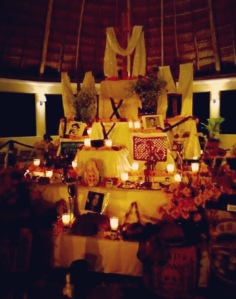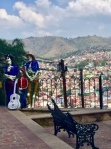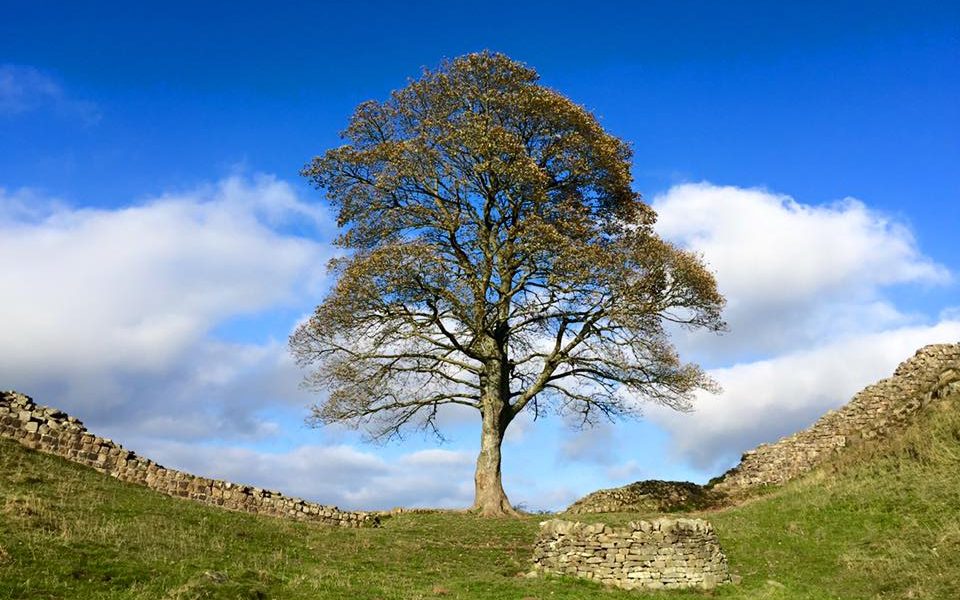
A couple of years ago, I wrote a piece about El Día de los Muertos, and as the Day of the Dead approaches once more, I’ve been thinking about it again, in part due to the fact that I love the event, in part as a result of spending a large chunk of my summer trying to get my head around anthropological accounts of loss and death (SUCH FUN), but most probably because I re-watched Coco.

Say what you like about Disney Pixar products, but they do (important) ‘movie messages’ rather well sometimes, most recently in this Día de los Muertos-inspired film that had me physically seat-shifting, not just flutter-blinking, as part of the process to quell the emotion it stirred in me at its end, desperately trying to avoid my Mexican in-laws from seeing me weep at a cartoon. (If you’ve not seen the film, probably best to not read on at this point – return once you’ve indulged!)
It would be remiss not to acknowledge that in opting to centre a film on the Day of the Dead, Disney Pixar was not only taking a culturally-sensitive risk, but it was also continuing with its tendency to appropriate ‘different culture’ for profit. Juan Castellano of Left Voice clearly pointed out that “The fact that Coco is a beautiful film should not stop us from recognizing capitalist appropriation of Mexican traditions.” Yet against all the backlash and debate and statements released in defence and to emphasise that the ‘Land of the Dead’ was research-grounded but ultimately a ‘made up’ “fantasy realm”, original to the film-makers, what must also be said is that, in reference to the theme of bereavement specifically, Coco does allow watchers to really grasp the meaning(s) of death in the Hispanic world, away from the almost-stereotyped imagery. Outside Mexico and other El Día de Los Muertos-observing countries, the event is used as illustration of the Hispanic world’s ability to ‘laugh at death’. It is a gem for tourism, especially for Mexico (the country for which the celebration is seen as most symbolic), those ‘outside’ lured by the visuals and consumables, the vivid colours juxtaposed with the darkness, channelled by the perception of a separation of their ideas regarding the relationship between life and death and those of Mexico as a nation. At its most simplistic, Stanley Brandes sums up the persistent and “familiar cultural construction” that, “Mexicans fail to distinguish life and death and seem unperturbed by the idea of death, while Western Europeans are squeamish before the reality of death, repulsed by the idea of death and differentiate markedly between life and death.” (2003: 130)
But here’s the thing – what you see publicly can’t be considered evidence of feeling. A ritual doesn’t always imply a specific, associated emotion. Internal sensations most often do not correspond to external projections – and research has shown this to be the case in Mexico, where ideas about how Mexicans view death have been found to not necessarily match expressions amongst the people consulted (Brandes, 2003, 1998). The problem for the Day of the Dead is that ideas of death in Mexico’s national identity, projected beyond its borders, can be seen as taking away from the people’s actual experiences of loss through death, and the purpose of the anniversary, at individual and familial levels. Brandes’ review of ethnographic works looking at funerals and wakes in different Mexican states, for instance, led him to argue generally there is an overlooking of the “emotional texture” of death and mourning in the country, that “all over the Mexican republic…mourners react to the death of loved ones in a manner that defies national stereotypes. In none of the[se] descriptions can we detect evidence of stoicism, humor, playfulness, and disdain in the face of death.” (2003: 137). A loss through death is serious and the grief is felt deeply.
After watching Coco, I thought about what I’d written in 2016, about the way I think the Day of the Dead can help the suicide bereaved because it can help people reclaim memories of the person away from the way they died, to concentrate on their life and loves, and while basically I still stand by that I also have started to form ideas that this is only part of the way this anniversary can aid. One of the most important points to Coco’s tale is that death is not solely about the single-moment, biological end – there are stages to death that require work and engagement on the part of those left behind that ultimately result in the continuation of a person’s life in death, not after. Memories exist but importantly they must be remembered, fostered, voiced by another in order for a person to continue beyond the end of their body. Also, our life stories are not owned by us alone – they depend on interactions with others and after death, therefore, they depend on those biologically living to take charge of how and if our narratives continue.
El Día de los Muertos highlights how communication after death is there, as is presence of the deceased (absence just isn’t) – ofrenda offerings speak, and act as invitations, to the deceased, reassuring them there is still space for them, whilst the candles on the altar provide a lighthouse effect to guide them back home for their annual visit. The event is more than simply remembering the loved one and the ‘good ‘ole times’ – it is about being with, as well as celebrating, them. It also allows space for those left behind to think not only of the deceased but their relationship with them as yes past, but also very much present (and even future) – a continuing bond with a loved one who has simply transitioned to a continuing existence in a different world, with the ability to return on a yearly basis. I quite like that – my brother annoyed the hell out of me, I can cope with a yearly hang out 😉 Seriously though, designing, building an ofrenda takes time and effort, it needs time specifically thinking about the gone person and the relationship as experienced, deciding how to lay out the altar in a way that shows what we would want to say to them, or for them to know, as they arrive home (almost like they’ve just been away for a bit). Moreover, ofrenda-making can involve others too, in a way that allows the person lost to be shared, even introduced to those who never physically knew them (thereby continuing a person’s story, extending their life) – they can still be known; new relationships can still be created.

The final, most significant stage of a death, according to Disney Pixar’s Coco (and Gómez, 1997:31), comes when there is no one to remember a person, to communicate with them, to care about them. I will do all I can to ensure that never becomes the case for my brother, that he will live on wherever he is, always aware of a home welcome waiting each year. Indeed, I find that this one day a year is instrumental in helping to provide relief from the bubbling of anger I can feel toward Martin, allowing me to let go, my gut to relax and myself to think of him in softer ways – and I love that. (I am secretly hoping there really is a ‘Land of the Dead’, ‘cause I can totally see Martin as a pontificating, roll-up-puffing, guitar-wielding skeleton in a red hat and slippers…).
For me, in all these ways, el Día de los Muertos’ strength is not in this idea of ‘laughing in the face of death’, but it definitely helps to laugh in the face of suicide – the enormity of this form of death and loss is swatted away like an irritating wasp at a picnic on a day that allows happier, undistorted memories and continuing intact relationships to be reinforced and take centre stage. 
Boorstein, M. (2018). ‘How the Oscar-winning ‘Coco’ and its fantastical after-life forced us to talk about death’ in The Washington Post, 4th March 2018. [Accessed here: https://www.washingtonpost.com/news/acts-of-faith/wp/2018/03/04/coco-is-the-conversation-weve-been-avoiding-about-death-and-the-afterlife/?noredirect=on&utm_term=.4cbe8a746c3e]
Brandes, S. (1997). ‘Sugar, Colonialism, and Death: On the origins of Mexico’s Day of the Dead’ in 270-299.
Brandes, S. (1998). ‘The Day of the Dead, Halloween, and the Quest for Mexican National Identity’ in The Journal of American Folklore, 111:442, 359-380.
Brandes, S. (2003). ‘Is there a Mexican View of Death?’ in Ethos, 31:1, 127-144.
Castellanos, J. (2017). ‘Coco: Capitalist Appropriation of Mexican Tradition’ in Left Voice, 22nd November 2017. [Accessed here: www.leftvoice.org/Coco-Capitalist-Appropriation-of-Mexican-Tradition]
Collin, R. (2018). ‘Coco review: Pixar makes sense of bereavement with a hopeful, healing celebration of life’ in The Telegraph, 19th January 2018. [Accessed here: https ://www.telegraph.co.uk/films/0/coco-review-pixar-makes-sense-bereavement-hopeful-healing-celebration/]
Gómez, R. (1997) ‘The Day of the Dead: Celebrating the Continuity of Life and Death’ in Journal of the Liturgical Conference, 14:1, 28-40.
Maralason, D. (2013). ‘Dia de los Muertos: Celebrating life through Day of the Dead’ in Latin Chamber Magazine, 6-8.
Ugwu, R. (2017). ‘How Pixar Made Sure ‘Coco’ Was Culturally Conscious’ in The New York Times, 19th November 2017. [Accessed here: https://www.nytimes.com/2017/11/19/movies/coco-pixar-politics.html]


 Martin was the first person to greet me on my 18th, bucks fizz in hand, and some of my favourite photos are of us at my ensuing party, his hair spiked with blue, us dancing and sipping cocktails together. Happy, laughter-filled observances.
Martin was the first person to greet me on my 18th, bucks fizz in hand, and some of my favourite photos are of us at my ensuing party, his hair spiked with blue, us dancing and sipping cocktails together. Happy, laughter-filled observances.


